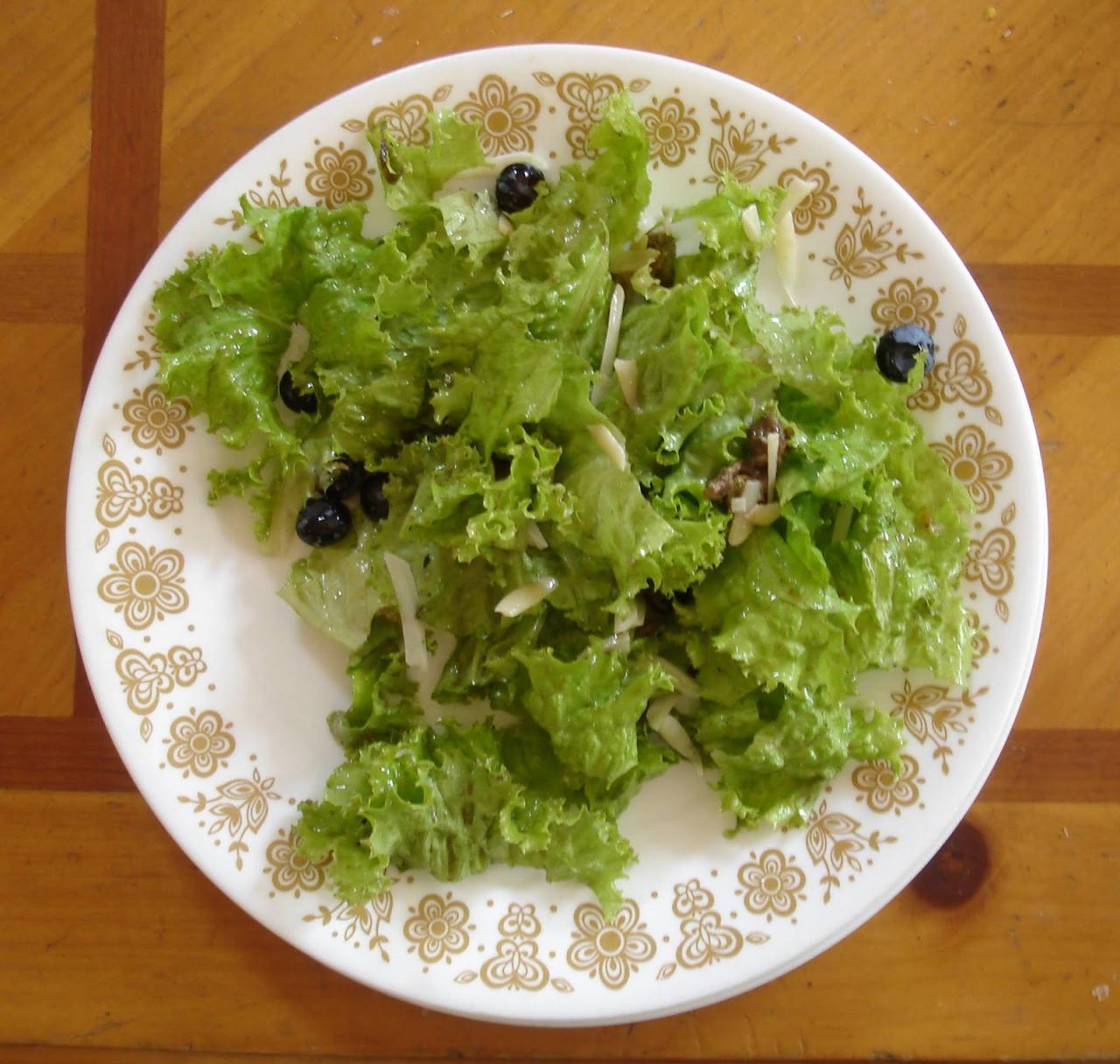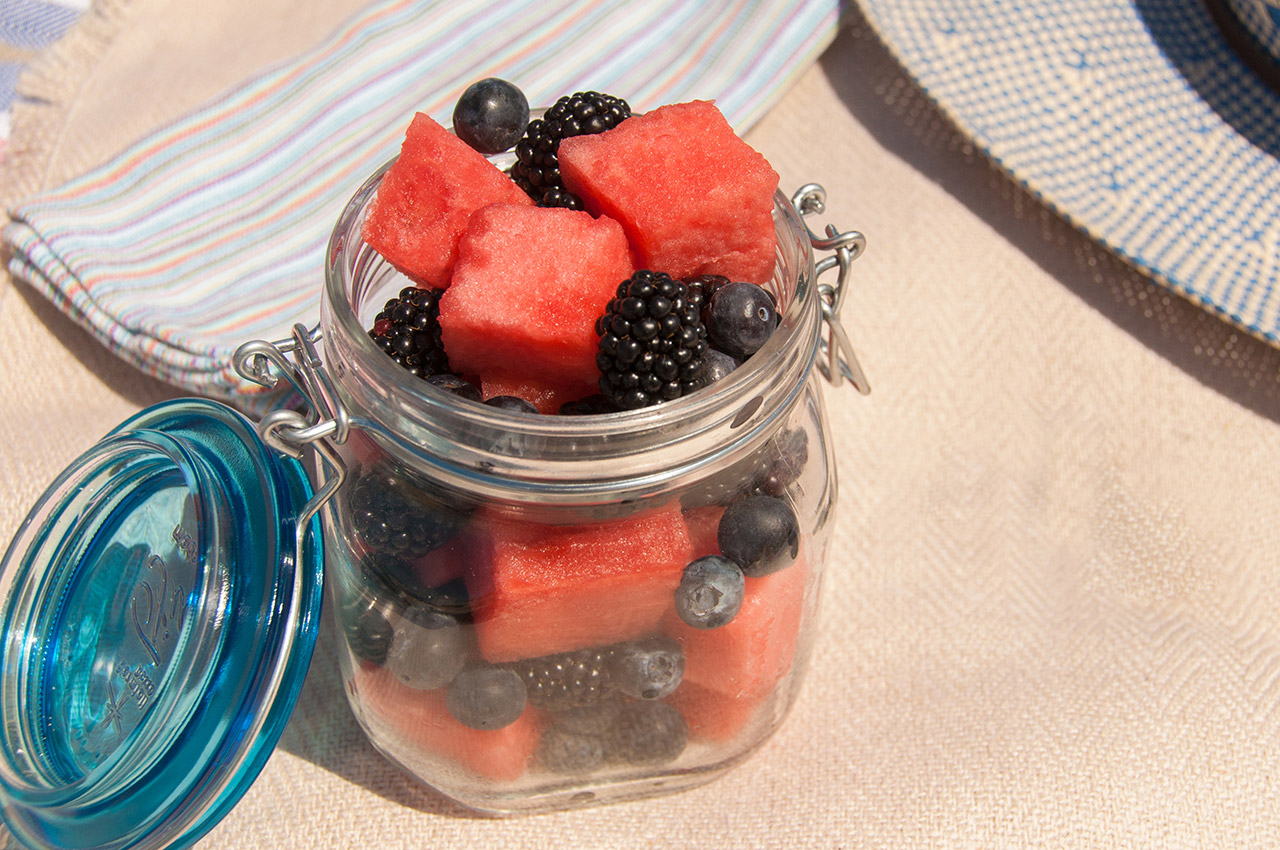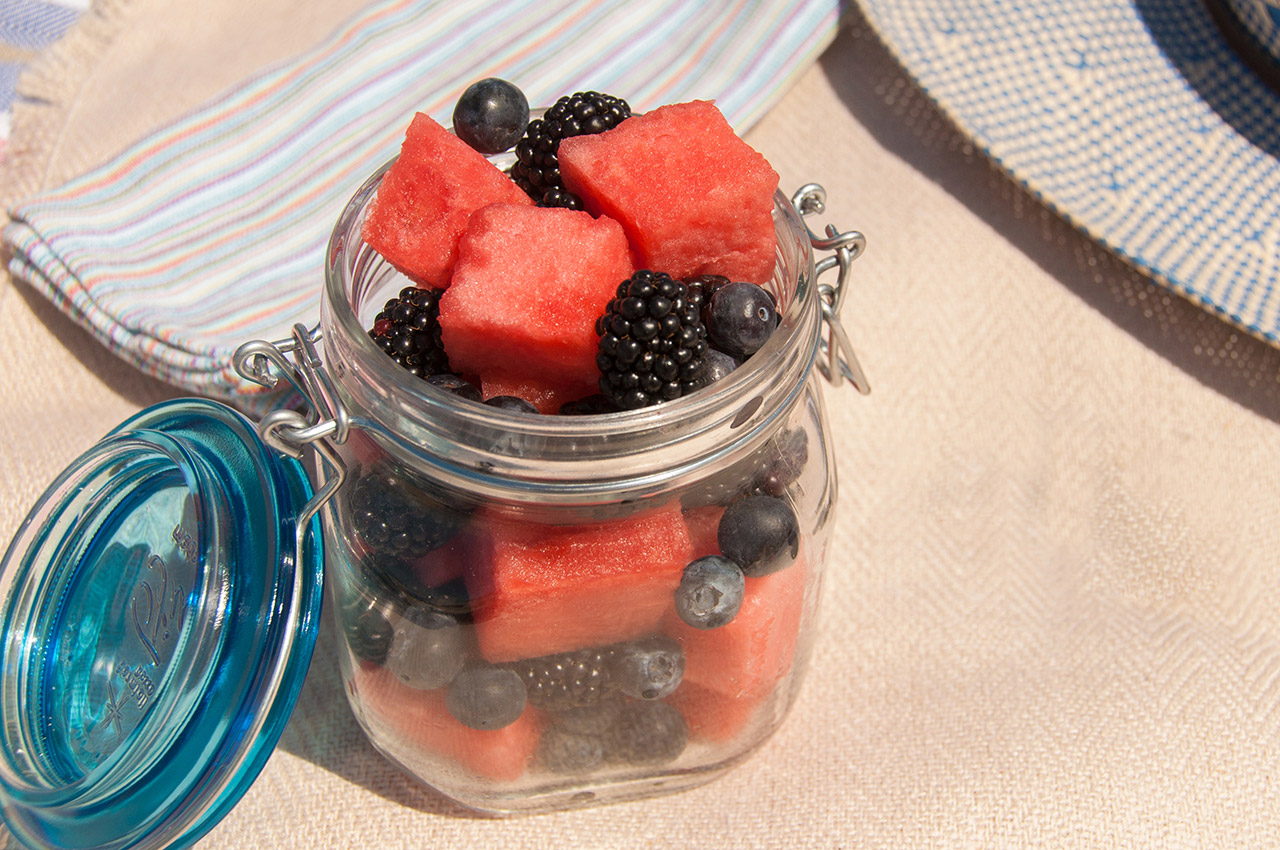How to Incorporate Blue Flowered Plants into Your Salad Recipes: Beyond their vibrant hues, blue-flowered plants offer a surprising depth of flavor and texture to salads. These edible blossoms add a touch of whimsy and visual intrigue, transforming ordinary greens into culinary masterpieces.
From the delicate petals of borage to the vibrant hues of chicory, these edible flowers not only enhance the visual appeal of your salads but also contribute a unique flavor profile that can be both subtle and surprising.
Beyond their aesthetic charm, blue-flowered plants are packed with nutrients. Rich in antioxidants, vitamins, and minerals, they can boost the nutritional value of your salads. Incorporating these edible flowers into your diet can contribute to a healthier lifestyle, adding a vibrant touch of nature to your culinary creations.
Introduction

The vibrant hues of blue-flowered plants add a touch of elegance and intrigue to any salad. These culinary gems not only enhance the visual appeal of your dishes but also offer a unique flavor profile and a wealth of nutritional benefits.
While incorporating blue-flowered plants into your salad recipes might seem unusual, consider the vibrant hues of borage or chicory, which add a delightful visual contrast to your greens. To cultivate these edible flowers, you’ll want to familiarize yourself with plant propagation techniques, and The Essential Guide to Rodgers Plant Propagation offers a comprehensive overview of various methods.
Once you’ve successfully propagated your blue-flowered plants, you’ll be ready to experiment with their unique flavors and colors in your culinary creations.
Incorporating blue-flowered plants into your salad recipes is a simple yet effective way to elevate your culinary creations and enjoy a burst of color and flavor.
Nutritional Benefits of Blue-Flowered Plants
Blue-flowered plants are a rich source of antioxidants, which help protect your cells from damage caused by free radicals. These plants also contain vitamins, minerals, and fiber, which contribute to overall health and well-being.
Common Blue-Flowered Plants Suitable for Salads
Here are some common blue-flowered plants that can add a touch of color and flavor to your salads:
- Borage:Borage has a mild cucumber-like flavor and is known for its star-shaped blue flowers. It is rich in antioxidants and can be added to salads for a refreshing twist.
- Chicory:Chicory has a slightly bitter flavor and is often used in salads as a leafy green. The plant’s blue flowers are edible and add a touch of sweetness to the salad.
- Cornflower:Cornflowers have a delicate, slightly sweet flavor and are often used as a garnish. They are a good source of antioxidants and can be added to salads for a splash of color.
- Forget-me-nots:Forget-me-nots have a mild, slightly sweet flavor and are often used as a garnish. They are a good source of antioxidants and can be added to salads for a touch of whimsy.
- Violets:Violets have a sweet, slightly floral flavor and are often used as a garnish. They are a good source of antioxidants and can be added to salads for a touch of elegance.
Choosing Blue-Flowered Plants
Selecting edible blue-flowered plants is crucial for incorporating them into your salad recipes. Not only do these plants add a vibrant splash of color, but they also offer unique flavors and textures that can elevate your dishes. Choosing the right blue-flowered plants is important for ensuring their safety and maximizing their culinary potential.
Identifying Edible Blue-Flowered Plants
Edible blue-flowered plants come in various forms, from delicate blossoms to bold blooms. Here’s a table that highlights some popular options:
Plant Name |
Flower Color |
Taste Profile |
Culinary Uses |
|---|---|---|---|
Borage |
Blue |
Cucumber-like, slightly sweet |
Salads, garnishes, infused oils |
Chives |
Purple-blue |
Onion-like, mild |
Salads, dips, soups, omelets |
Cornflower |
Blue |
Slightly sweet, delicate |
Salads, garnishes, teas |
Violets |
Blue, purple |
Sweet, slightly floral |
Salads, desserts, infused syrups |
When identifying edible blue-flowered plants in your garden or local market, it’s essential to be cautious.
Always double-check the identification of any plant before consuming it.
If you’re unsure, consult a trusted gardening expert or a reputable source for plant identification.
Preparing Blue-Flowered Plants for Salads

Once you’ve chosen your blue-flowered plants, it’s time to harvest and prepare them for your salads. The preparation process will vary depending on the plant, but there are some general guidelines to follow.
Adding a touch of blue to your salads can create a visually appealing and unique culinary experience. While traditional blue edible flowers like borage are popular, consider incorporating the vibrant blue blooms of Columbine plants. Columbine Plants: Expert Advice for Beautiful Blooms offers expert advice on cultivating these beautiful plants, ensuring a steady supply of their delicate, blue flowers for your salads.
Just be sure to use only the petals, as the leaves and stems can be bitter.
Harvesting Blue-Flowered Plants
Harvesting blue-flowered plants for salads involves carefully collecting the edible parts, such as petals, leaves, or buds, while ensuring the plant’s health and continued growth.
- Timing:Harvest blue-flowered plants when they are at their peak freshness and flavor. This typically means picking them in the morning after the dew has dried.
- Methods:The harvesting method depends on the plant. For example, you can pluck individual petals from flowers like borage or cornflower, or you can cut entire leaves or stems from plants like chicory or blue basil.
- Quantity:Only harvest a small amount of each plant at a time, leaving enough for the plant to continue growing.
Preparing Blue-Flowered Plants for Salads
Once you’ve harvested your blue-flowered plants, it’s time to prepare them for your salad. This involves cleaning, trimming, and sometimes cooking the plants.
- Washing:Rinse the plants thoroughly under cold water to remove any dirt, insects, or debris.
- Trimming:Remove any tough stems, leaves, or parts of the plant that are not edible.
- Cooking:Some blue-flowered plants, such as violets, may need to be cooked before being added to salads.
This can be done by blanching them in boiling water for a few seconds, which helps to soften them and bring out their flavor.
Blue-Flowered Plant Preparation Guide, How to Incorporate Blue Flowered Plants into Your Salad Recipes
Here’s a table summarizing the preparation methods, potential side effects, and storage recommendations for some popular blue-flowered plants used in salads:
Plant Name |
Preparation Methods |
Potential Side Effects |
Storage Recommendations |
|---|---|---|---|
Borage |
Rinse petals, remove stems. Can be eaten raw or blanched for a few seconds. |
May cause mild allergic reactions in some individuals. |
Store petals in a sealed container in the refrigerator for up to 3 days. |
Cornflower |
Rinse petals, remove stems. Can be eaten raw or used as a garnish. |
No known side effects. |
Store petals in a sealed container in the refrigerator for up to 3 days. |
Chicory |
Rinse leaves, trim stems. Can be eaten raw or cooked. |
May cause mild digestive upset in some individuals. |
Store leaves in a sealed container in the refrigerator for up to 5 days. |
Blue Basil |
Rinse leaves, trim stems. Can be eaten raw or used in pesto. |
No known side effects. |
Store leaves in a sealed container in the refrigerator for up to 5 days. |
Incorporating Blue-Flowered Plants into Salads
Blue-flowered plants, with their vibrant hues, can add a striking visual element to salads, but their versatility extends beyond aesthetics. These plants often possess unique flavors and textures that can enhance your salad experience. Incorporating them into your salad recipes can elevate the visual appeal, add depth to the flavor profile, and introduce a touch of the unexpected.
Creative Salad Recipes Featuring Blue-Flowered Plants
Blue-flowered plants offer a wide range of flavors and textures, allowing for creative combinations in salads. Here are some recipes that showcase their versatility:
- Blue Cornflower and Goat Cheese Salad: This salad features the delicate sweetness of blue cornflowers paired with creamy goat cheese and a light vinaigrette. The cornflowers add a vibrant blue hue, while the goat cheese provides a rich, tangy counterpoint.
- Borage and Strawberry Salad with Balsamic Vinaigrette: The star anise-like flavor of borage blossoms complements the sweetness of strawberries. The combination is enhanced by a tangy balsamic vinaigrette, creating a refreshing and flavorful salad.
- Chicory and Walnut Salad with Honey Mustard Dressing: Chicory, with its slightly bitter flavor, adds a contrasting note to the creamy walnuts and the sweet and tangy honey mustard dressing. The blue chicory blossoms provide a beautiful visual contrast to the other ingredients.
Combining Blue-Flowered Plants with Other Salad Ingredients
When incorporating blue-flowered plants into your salads, consider their flavor profiles and textures to create harmonious combinations.
- Sweet and Savory Combinations: Pair blue-flowered plants like borage or cornflowers with sweet ingredients like strawberries, grapes, or apples. The sweetness balances the slightly bitter or peppery notes of some blue flowers.
- Salty and Tangy Combinations: Combine blue-flowered plants with salty ingredients like feta cheese, olives, or sun-dried tomatoes. The tanginess of these ingredients complements the floral notes of the blue flowers.
- Contrasting Textures: Play with textures by combining crunchy blue-flowered plants like chicory with soft ingredients like avocado or spinach. This creates a multi-sensory experience.
Salad Recipe Ideas with Blue-Flowered Plants
Salad Name |
Blue-Flowered Plant |
Other Ingredients |
Dressing Recommendations |
|---|---|---|---|
Blue Cornflower and Citrus Salad |
Blue Cornflower |
Orange segments, grapefruit segments, toasted almonds, crumbled feta cheese |
Honey-Citrus Vinaigrette |
Borage and Beet Salad |
Borage |
Roasted beets, crumbled goat cheese, toasted walnuts |
Balsamic Vinaigrette |
Chicory and Pear Salad |
Chicory |
Thinly sliced pears, candied pecans, crumbled blue cheese |
Honey-Mustard Vinaigrette |
Violet and Strawberry Salad |
Violet |
Fresh strawberries, chopped spinach, crumbled goat cheese |
Lemon-Basil Vinaigrette |
Culinary Considerations

Incorporating blue-flowered plants into salads adds a unique dimension to both taste and presentation. These plants can contribute a range of flavors and textures, ranging from subtle floral notes to peppery bites, while also introducing a vibrant splash of color to the salad.
Understanding the culinary characteristics of these plants is key to maximizing their impact on your salad creations.
Flavor and Texture Contributions
Blue-flowered plants offer a diverse range of flavors and textures, enriching salads beyond their visual appeal. Some, like borage, contribute a subtle cucumber-like flavor, while others, such as chicory, add a slightly bitter note. The texture can vary from delicate and soft, as seen in the petals of violas, to slightly crunchy, as in the leaves of blue basil.
Visual Impact
The vibrant blue hues of these plants create a striking contrast against the greens and yellows of traditional salad ingredients. Blue flowers, like cornflowers, can serve as a focal point, adding a touch of elegance and sophistication. Their color can also help to enhance the visual appeal of the salad, making it more inviting and appealing to the eye.
Preserving Color and Vibrancy
Maintaining the vibrant blue color of these plants in salads requires careful handling. Some blue flowers, like cornflowers, are known to fade in color when exposed to heat or acidic environments.
- Use fresh flowers:Freshly picked flowers will retain their vibrant color for a longer duration. Avoid using wilted or damaged flowers, as they may contribute to color fading.
- Minimize heat exposure:Avoid exposing the flowers to excessive heat, such as in direct sunlight or during cooking. Heat can cause the blue pigments to break down, resulting in a loss of color.
- Avoid acidic dressings:Acidic dressings can also cause the blue pigments to fade. Opt for neutral dressings or dressings with minimal acidity to preserve the color.
- Consider adding a bit of baking soda:A small amount of baking soda can help to stabilize the blue pigments and prevent fading.
Conclusive Thoughts: How To Incorporate Blue Flowered Plants Into Your Salad Recipes
Incorporating blue-flowered plants into your salads is an adventure in both flavor and aesthetics. It’s a simple yet effective way to elevate your culinary game, adding a touch of whimsy and nutritional value to your meals. With a little creativity and a dash of experimentation, you can transform ordinary salads into vibrant culinary masterpieces that tantalize the palate and delight the senses.
Q&A
What are some common blue-flowered plants that are safe to eat?
Common edible blue-flowered plants include borage, chicory, butterfly pea flowers, and blue cornflowers.
Where can I find blue-flowered plants for my salads?
You can find blue-flowered plants at farmers markets, specialty grocery stores, or even in your own garden.
How do I ensure the blue-flowered plants I use are safe to eat?
Always double-check the identification of any plant before consuming it. If you are unsure, consult a gardening expert or a reputable source.
Can I use blue-flowered plants in other dishes besides salads?
Absolutely! Blue-flowered plants can be used to garnish desserts, drinks, or even added to soups and stews.
